Beautiful Woad
I’ve tried making woad a few times – always from my allotment plants which are gradually colonising more and more of my allotment….
These beautiful stately plants with their long, grey green leaves and clouds of yellow flowers have always been slightly illusive to me – promising colour but always slightly slipping away when I try to convert their promise into dye, always sticking a little too yellow or losing their blue rather quicker than I would like.
I’ve kept an indigo bath for years – always added to and rarely cleared out in which I dye metres and metres of linen and hemp. But the indigo I have traditionally used are the cakes of tropical indigo you can get from places like Cloth House. I follow a recipe, I like to think – given to me by Phyllis Barron. It’s a photocopy of her typewritten recipe that I found at her archive in Farnham.
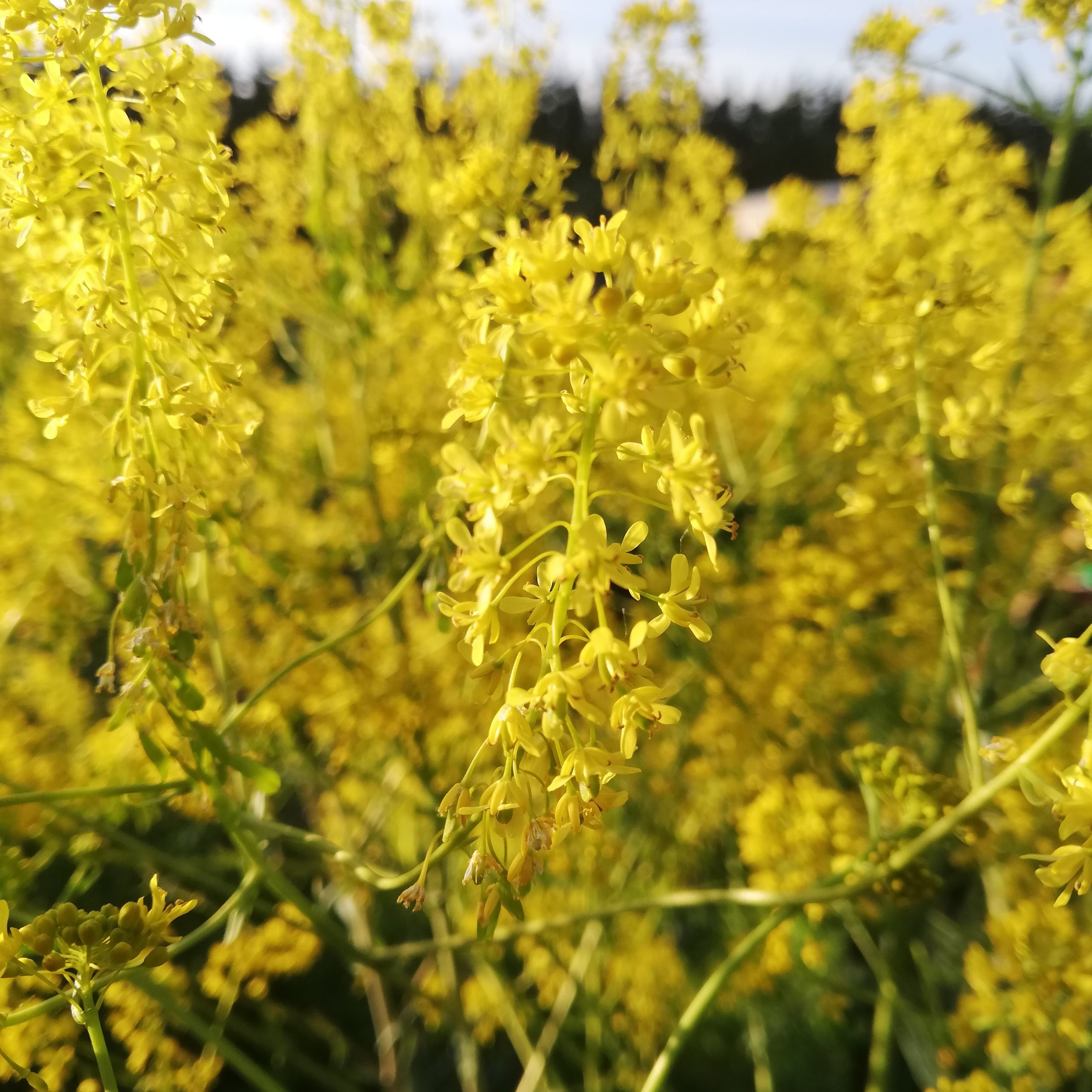
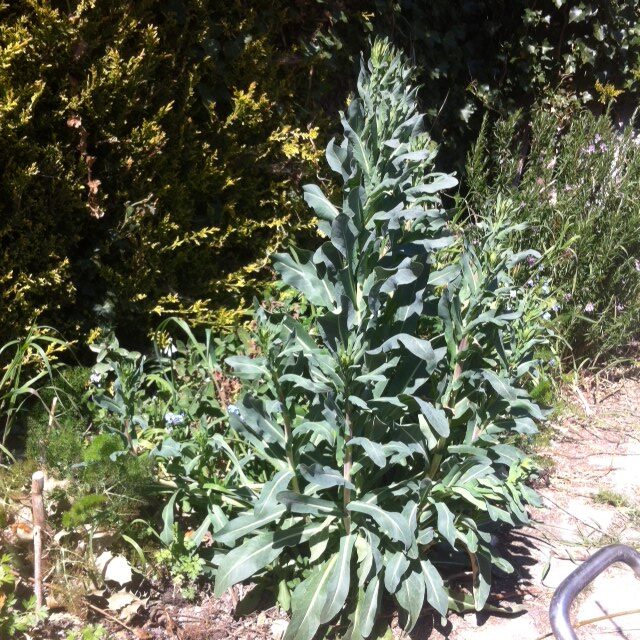
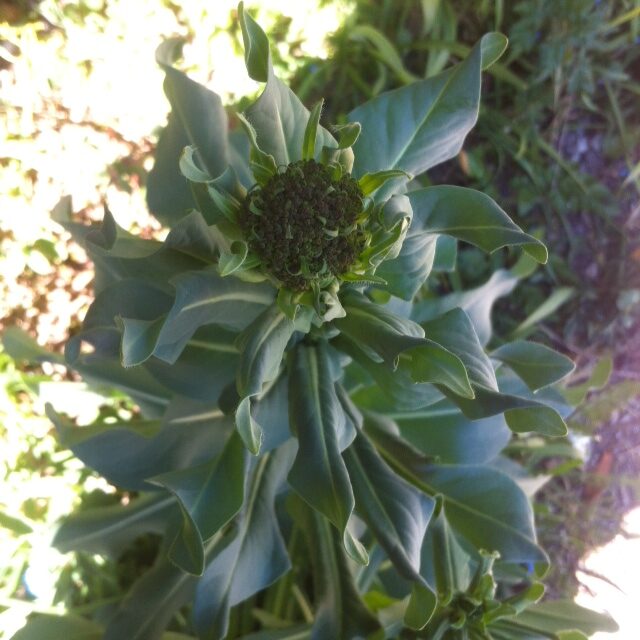
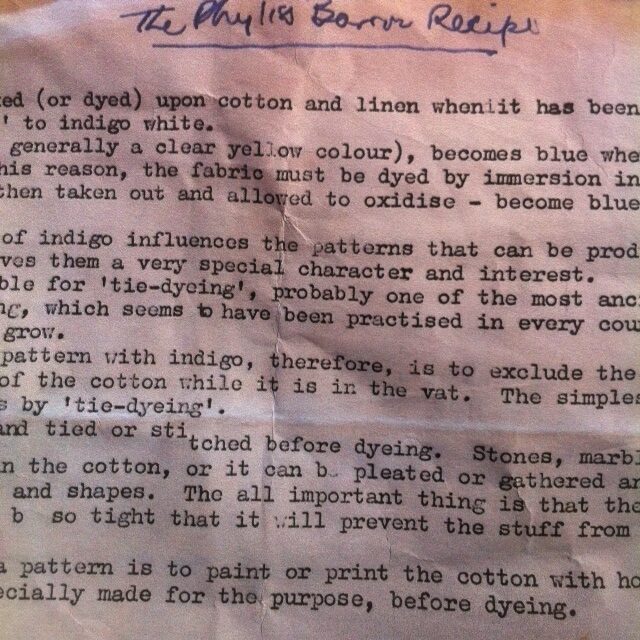
But my woad plants were always there – reminding me of another kind of blue and offering me something I know will be special and most especially an opportunity to discover something new and ancient. So I was thrilled to harvest my woad and join lovely Debbie Manson & Clare O’Leary over in Lewes for a lovely day of woad dyeing – plus so thrilling to leave Steyning!!
I wanted to share the process we shared together with you. If you are a beginner or maybe already had a go with woad, I thought you might find it interesting.
- I harvested my woad fresh from the allotment. First we shredded the fresh leaves & stood the shredded leaves in boiling water for around an hour.
2) Next we strained off the liquid and shifted the PH of the bath to make it more alkali PH8/9. We did this using Soda Ash. A successful indigo bath must be alkali – this is one of it’s key characteristics
3) Next, we aerated the bath – essentially introduced more oxygen by pouring it from bucket to bucket. We did this for about 15 minutes until the bath was nice and foamy and blue.
4) Finally we used a teaspoon of Sodium Hydrosylphite to remove the oxygen and create our lovely yellow dye bath.
We left the bath to rest for about half an hour before introducing the cloth.
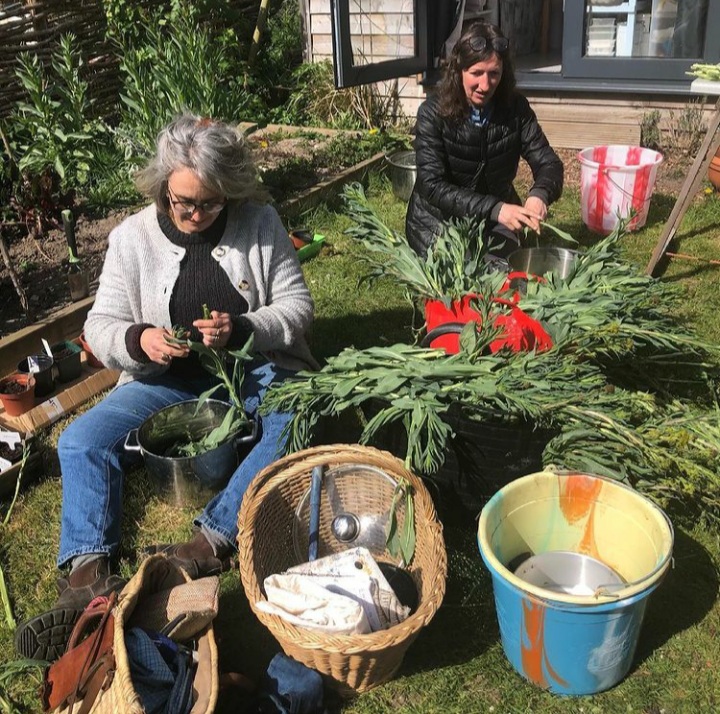
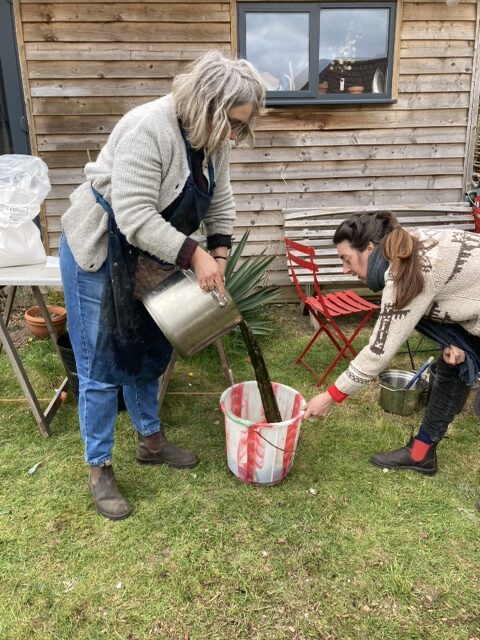
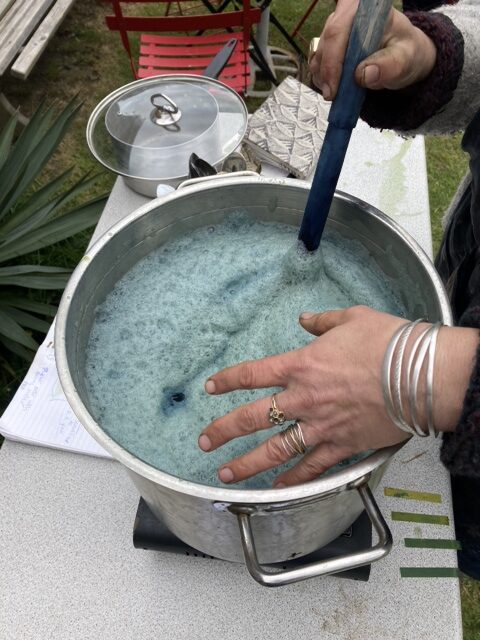
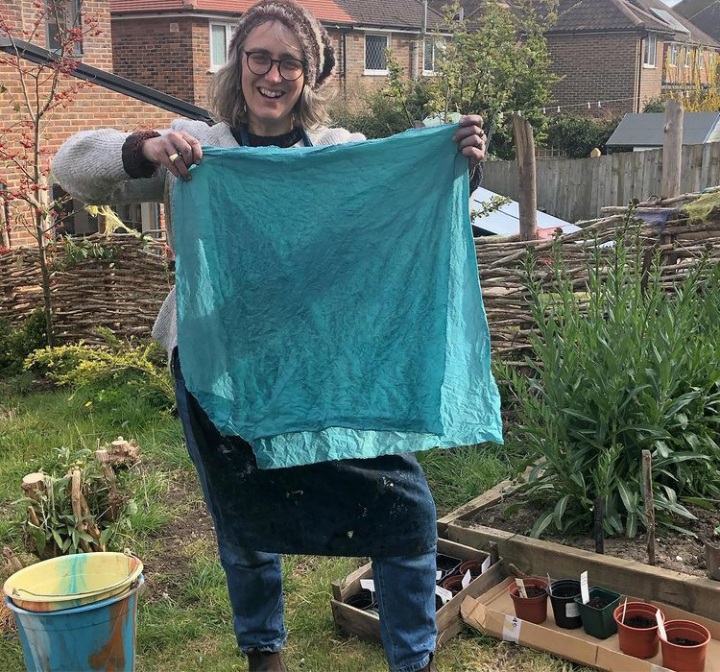
5) These were left in the bath for at least 10 minutes before being removed and quickly placed in a bath of cold water and vigorously agitated – does that make sense?
As we did this – the cloth turned properly blue and seemed to fix really well. So a brilliant idea – thank you Clare!
And a BIG thank you to Debbie for welcoming us into her wonderful workshop garden studio – our time together was really joyful collaboration, play & togetherness.

